About
Sewage Treatment Plant- STP
01. BEST SEWAGE TREATMENT PLANT (STP) IN BANGLADESH: HELPING TO BUILD A SUSTAINABLE FUTURE
STP stands for Sewage Treatment Plant, which refers to the system’s function of treating and purifying wastewater. Sewage Treatment Plants (STP) in Bangladesh are not just for cleaning wastewater. They play a big role in ensuring the country grows safely and sustainably. As more people move to cities and the population increases, treating wastewater properly is even more important. Effective sewerage treatment helps prevent water pollution, protects public health, and supports a cleaner environment for future generations.
STPs use advanced methods like the Activated Sludge Process, removing harmful chemicals, and advanced filtration to clean the water. These plants help reduce pollution and keep people healthy, which is why they are important for Bangladesh’s future.
The government has set up STPs to manage the waste water like gray water and black water from kitchen, bathrooms and household in cities like Dhaka, Chittagong, and Khulna. Government groups like the Department of Public Health Engineering (DPHE) or local city authorities manage these plants to show their commitment to cleaner water.
Getting private companies to help build and run more STPs could improve the system and cover more areas. This will help Bangladesh manage waste water more completely.
However, many rural and suburban areas still face challenges. Poor infrastructure, insufficient money, and people not knowing the importance of treating waste water cause problems. This releases untreated waste water, which harms the environment and public health.
To fix these problems, Bangladesh needs to keep investing in better sewage treatment systems. Authorities also need to educate people and enforce stricter rules to ensure proper waste water treatment everywhere.
WHAT IS SEWAGE TREATMENT PLANT USED FOR?
Protecting Public Health
The main goal of sewage treatment is to keep people healthy. It removes harmful germs and pollutants from waste water before it goes back into rivers or is used again.
Preventing Water Pollution
Sewage treatment helps stop pollution in water by getting rid of things like waste, chemicals, and harmful bacteria. This protects both our health and the animals that live in the water.
Recovering Resources
Sewage treatment can turn waste water into useful resources. For example, people or facilities can produce energy (like biogas), extract nutrients (to use as fertilizer), and treat water (for irrigation or factory use).
Following the Rules
Many countries enforce laws to ensure proper treatment of waste water before releasing it. Sewage treatment helps meet these laws, keeping the environment and people safe. Like, in Japan they use Johkasou STP technology.
Reusing Water
People or facilities can reuse treated waste water for activities like watering plants, supporting factories, or refilling groundwater. This saves freshwater for other needs.
Sewage treatment Plant helps protect public health, keeps our environment clean, and helps us use water and other resources wisely. By understanding how important sewage treatment is, we can all help make Bangladesh a healthier place to live.
WHERE STP IS NEEDED?
- Urban Areas: To manage wastewater from residential and commercial sources
- Industrial Zones: For treating industrial effluents and pollutants.
- Resorts and Campsites: To maintain environmental sustainability.
- Agricultural Lands: For irrigation and fertilization with treated water.
- Remote Locations: Ensures proper waste management in isolated areas.
- Public Health Facilities: To handle medical wastewater safely.
- Environmental Conservation: To protect natural water bodies and ecosystems.
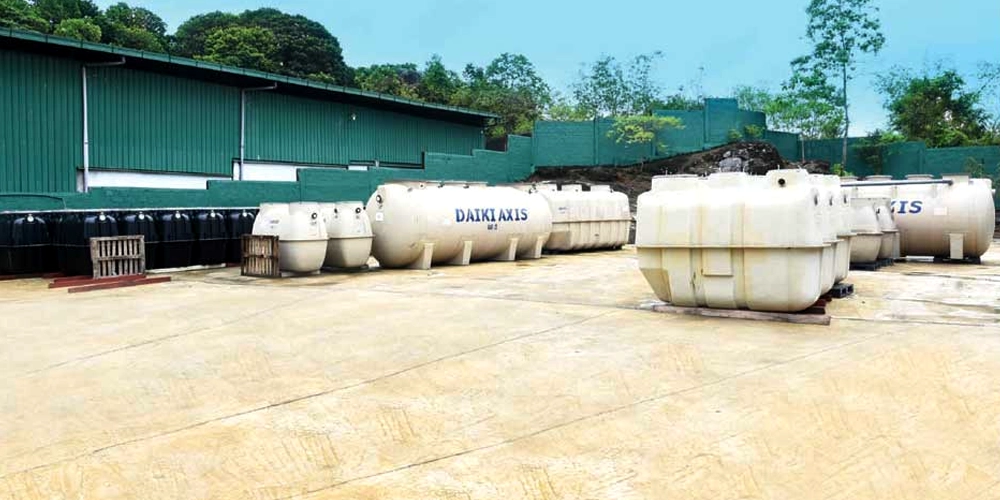
Types of Sewage Treatment Technologies Used Worldwide
Different sewage treatment methods are used around the world to clean wastewater before it’s released into the environment. These technologies range from traditional systems to advanced, eco-friendly solutions.
Traditional Sewage Treatment Methods
These methods are commonly used in cities and industries to treat large amounts of wastewater:
- Activated Sludge Process (ASP): Air and helpful bacteria break down organic waste.
- Trickling Filters: Wastewater flows through a bed of stones or plastic, where bacteria remove pollutants
- Sequencing Batch Reactor (SBR): Treats wastewater in cycles for efficient cleaning.
- Membrane Bioreactor (MBR): Combines biological treatment with membrane filtration to produce clean water
Decentralized & Compact Treatment Systems
These systems are perfect for areas without access to large sewage plants:
- Johkasou-STP (Advanced On-Site Treatment): Johkasou-STP is a type of sewage treatment plant (STP) commonly used in Japan for treating wastewater from households, small communities, or buildings that are not connected to a centralized sewer system.
- Constructed Wetlands: Plants and bacteria naturally clean wastewater.
- Septic Tanks: Common in homes and small communities but less effective than Johkasou.
- Lagoon Systems (Pond Treatment): Large, shallow ponds where sunlight, algae, and bacteria work together to clean wastewater.
Advanced & High-Tech Treatment Methods
These are used in developed countries and areas with strict environmental rules:
- Reverse Osmosis (RO) Treatment: A special membrane removes contaminants to produce pure water.
- Ultraviolet (UV) Disinfection: UV light kills bacteria and viruses.
- Ozonation: Ozone gas disinfects water and removes pollutants.
- Electrocoagulation (EC): Electricity separates harmful particles from wastewater
Eco-Friendly & Emerging Technologies
These methods reduce pollution and save resources:
- Anaerobic Digestion (AD): Breaks down organic waste without oxygen, producing biogas for energy.
- Biofilters & Bioreactors: Microorganisms improve wastewater treatment efficiency
- Zero Liquid Discharge (ZLD) Systems: Completely treats wastewater, leaving no discharge and recovering water for reuse.
Types of Sewage Treatment Plants in Bangladesh
In Bangladesh, organizations or authorities use different types of Sewage Treatment Plants (STP) to treat wastewater, depending on the needs of each area. Here are some common types of STP they use in the country:
- Activated Sludge Process: This is one of the most common ways to treat sewage. It uses air in tanks to help tiny microorganisms break down waste. This technique is mostly used in big cities and towns.
- Extended Aeration System: Similar to the activated sludge process, this method allows more time for air to treat sewage. People use it in smaller towns and communities for better treatment.
- Sequencing Batch Reactor (SBR): In this system, sewage is treated in stages inside the same tank. It’s very efficient and flexible, making it great for areas where the amount of sewage changes a lot.
- Oxidation Ponds: Also called stabilization ponds, these treat sewage naturally with sunlight and bacteria. They are cheap to build and are often used in rural areas or small villages.
- Constructed Wetlands: This method uses plants and bacteria to treat sewage naturally. It’s eco-friendly and is often used in smaller communities or to treat waste water from places like factories or schools.
- Septic Tanks: In rural or suburban areas where big treatment plants aren’t possible, people use septic tanks. These tanks separate solids from liquids, allowing bacteria to break down waste before releasing it into the ground.
- Decentralized or Package Plants: These are small, compact treatment systems designed for small towns, businesses, or schools. They combine different treatment steps like settling, cleaning, and disinfecting the water in one unit.
Choosing the right system is important to ensure the proper treatment of waste water. Experts are also using new technologies to improve the efficiency and performance of these systems.
Sewage Treatment Plant (STP) and Their Maintenance
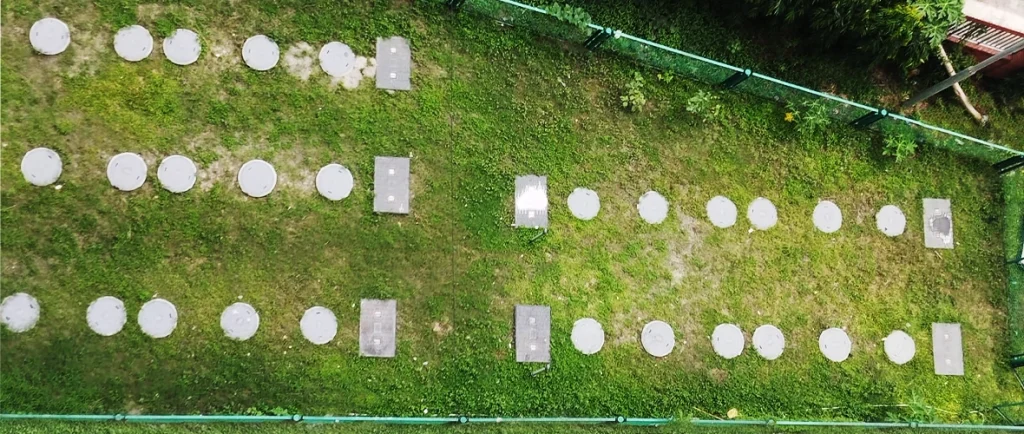
Sewage Treatment Plant (STP) helps clean waste water before it goes back into nature. Here’s how STPs work and how we keep them running smoothly:
- Primary Treatment: First, we remove solid waste from the water. To keep things working, we clean the tanks and screens regularly to remove any waste that might block the flow.
- Secondary Treatment: This stage uses natural bacteria to break down the waste in the water. We make sure there’s enough oxygen and check the temperature and pH. We also clean and check the aeration tanks, filters, and other parts often.
- Tertiary Treatment: This stage removes the last bit of harmful things in the water, like nutrients and germs. We check the chemicals, filters, and disinfection systems to make sure they are working right.
- Sludge Treatment: After cleaning the water, there’s leftover sludge. We regularly remove and treat this sludge to stop bad smells and keep the environment safe.
- Sensors and Control Systems: STPs use sensors to check everything, like water quality and temperature. We need to calibrate these sensors and check the systems to make sure they’re working correctly.
- Pumping Stations: These stations help move water through the plant. We check the pumps, valves, and motors regularly to make sure they work and are well-lubricated.
- Safety and Rules: STPs must follow safety rules. We inspect emergency equipment and make sure everything is in place to avoid accidents.
- Keeping Records: We keep track of everything that happens in the plant, like maintenance and performance. This helps us fix problems and follow the rules.
In short, regular maintenance helps STPs work well. It keeps our water clean, protects the environment, and helps the plant run smoothly for a long time.
STP Requirements for Factories in Bangladesh
Factories in Bangladesh need sewage treatment plants (STPs) to handle waste water safely. Here’s why they are important:
- Protecting Nature: Factories must clean their waste water before releasing it. STP remove harmful things from the water, keeping rivers and lakes safe.
- Stopping Water Pollution: Factory waste can poison water. STPs clean this waste to protect fish, plants, and people who use the water.
- Keeping People Safe: Dirty water spreads diseases. STPs kill germs and remove chemicals, making the water safe for everyone.
- Saving Fresh Water: Sewage Treatment Plant (STP) clean waste water so factories can reuse it. This helps save clean water for drinking and farming.
- Following Global Rules: Factories that sell products to other countries must meet clean water standards. STP help factories follow these rules.
- STP make water clean, protect health, and save resources. They also help factories stay successful and responsible.
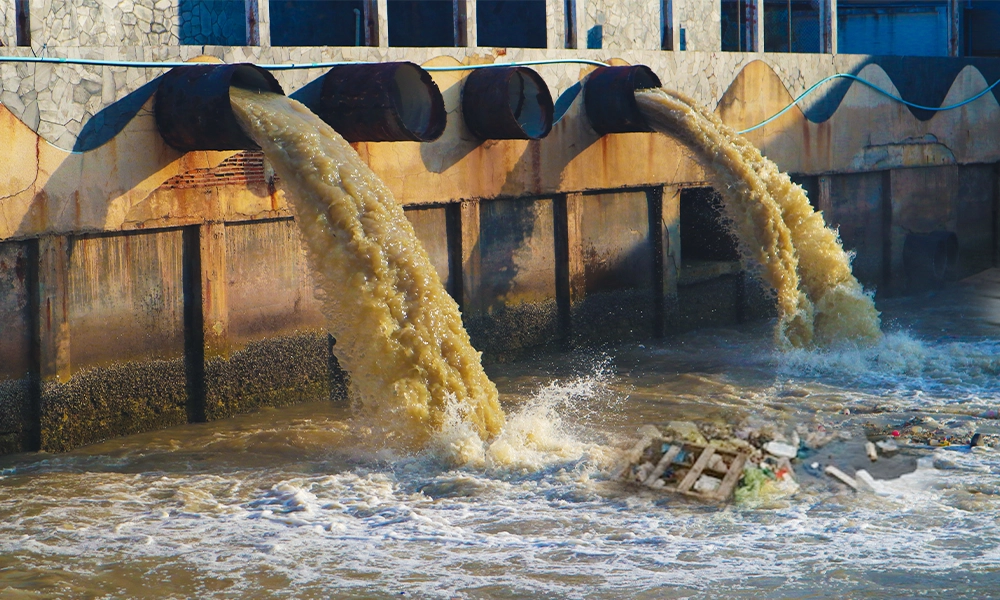
STP Requirements for Residential Buildings in Bangladesh
In Bangladesh, when building a residential structure, it’s important to follow certain rules for managing waste water. These rules might change depending on where the building is located or what type of building it is. Here are the main things to keep in mind about Sewage Treatment Plants (STP) in residential buildings:
Building Codes & Regulations: All buildings need to follow national or local building rules, like the Bangladesh National Building Code (BNBC). These rules include making sure that there’s a good system for handling waste, including STP.
Environmental Regulations: There are rules to make sure waste water is treated properly before being released into the environment. This is important to keep the environment clean.
Local Government Requirements: Different cities or local governments may have their own specific rules about STPs for residential buildings. These rules may change based on the size of the building and where it’s located.
Design & Capacity: The builders need to construct the STP in a way that fits the size of the building and the number of people living there. Factors like water usage, the number of units, and available space will help decide the STP’s design.
Maintenance & Operation: It’s important to keep the STP well-maintained so it works properly. The building owner or manager is responsible for making sure the STP is taken care of and follows all the rules.
Approval & Permits: Before installing an STP, it’s necessary to get approval from the local authorities. This usually means submitting design plans and checking if the system will have any negative effects on the environment.
Certification: Once the builders install the STP, an inspector may need to check it to ensure it meets all the standards and regulations.
Builders, developers, and homeowners must consult with local authorities and waste water experts to ensure everything is done correctly.
How Bangladesh is Getting Private Companies to Help with Sewage Treatment Plants (STP)
Bangladesh is working to get private companies involved in building and running Sewage Treatment Plants (STPs) to deal with waste and pollution in the cities. Here’s how they’re making it easier for businesses to help:
- Teamwork with Private Companies: The government is teaming up with private companies through something called Public-Private Partnerships (PPPs). This means both the government and the companies share the work, risks, and rewards of building and managing STPs.
- Giving Special Benefits: To make it easier for companies to join in, the government offers benefits like tax cuts, land for projects, and faster approvals. These perks make it more attractive for businesses to invest in STPs.
- Fair Bidding Process: The government makes sure that every company has a fair chance to compete for STP projects. This encourages businesses to show their best ideas and offer the best deals.
- Training Local Companies: The government helps local businesses learn how to build and manage STP. They offer workshops and training so these companies can improve their skills and build better sewage treatment plants.
- Reducing Risks for Companies: To make it less risky for private companies, the government offers guarantees or shares some of the financial risks. This helps companies feel more comfortable investing in STP.
- Affordable Costs for Everyone: The government makes sure the cost of sewage treatment is not too high for people, but still allows businesses to make enough money to keep the STPs running.
- Clear Rules to Follow: The government has set clear rules for private companies to follow, making sure they follow the right standards to protect the environment and make sure the STPs work properly.
- Getting the Community Involved: The government also talks to local people about these projects. When people understand how the STP can help, they are more likely to support them.
Overcoming Obstacles to Sewage Treatment in Bangladesh's Rural and Peri-Urban Areas: Challenges and Solutions
Ensuring proper sewage treatment in the peri-urban and rural areas of Bangladesh is tough. Several problems make it harder to manage sewage in these places. Here are some of the challenges and the ways to solve them:
Challenges
- Lack of Infrastructure: Many rural areas do not have sewage systems, such as pipelines or treatment plants, making it hard to handle waste properly.
- Limited Resources: These areas do not have enough money or workers to build or take care of sewage treatment plants.
- Growing Population: As more people move to peri-urban areas, the growing population overloads the existing sewage systems, making it difficult to provide proper treatment.
- Lack of Awareness: People often do not know how important proper sewage treatment is, which can lead to bad waste disposal practices and worsen pollution and health problems.
- Geography: Some rural areas have land challenges like low areas or high groundwater levels. This makes it difficult for traditional sewage systems to work properly.
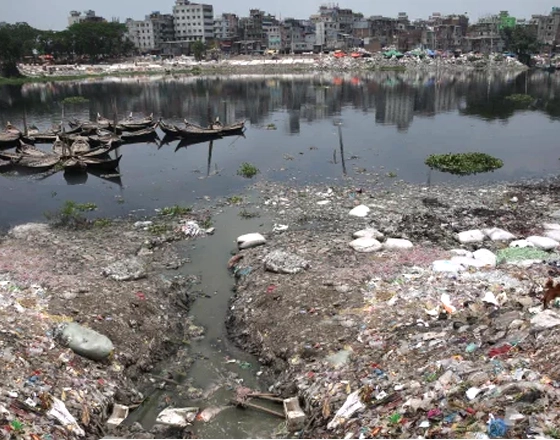

Solutions
- Community Education: To fix the problem, the government and organizations are working on teaching people about the importance of treating sewage and keeping their surroundings clean.
- Small-Scale Treatment Systems: Instead of large treatment plants, people can use smaller, simpler systems like septic tanks or constructed wetlands. These are cheaper, easier to set up, and work well in rural areas.
- Private Sector Involvement: The government is working with private companies to help build and maintain sewage systems. This partnership helps bring in more resources and expertise.
- Government Policies: The government has set up plans and rules to improve sanitation and sewage treatment in underserved areas. They are also ensuring that new rules are followed.
By using a mix of community awareness, smaller treatment systems, and government support Bangladesh is working hard to improve sewage treatment in rural and peri-urban areas.
Revolutionary Sewage Treatment Technologies Transforming Waste Water Management in Bangladesh
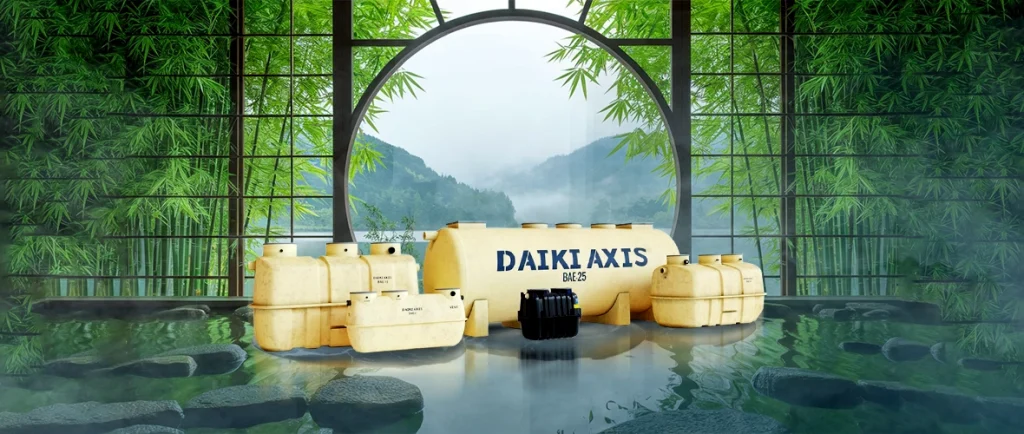
Bangladesh is working on new ways to improve sewage treatment. Here are some of the latest ideas being tried out:
- Decentralized Wastewater Treatment Systems (DEWATS): These systems are becoming more common in Bangladesh because they are affordable and easy to set up in small communities or homes. DEWATS uses natural processes, like bacteria breaking down waste, to clean the water.
- Constructed Wetlands: This is a clever idea where artificial wetlands are built to treat waste water. These wetlands work like natural swamps and clean the water in a simple, low-cost way. It’s a green solution that works well for small communities or factories.
- Biogas Plants: Some sewage treatment plants in Bangladesh are now making biogas as part of the treatment process. This biogas can be used for cooking or lighting, which helps save energy while cleaning the water.
- Advanced Filtration Technologies: In cities, where space is limited, experts are testing new filtration systems like membrane bioreactors (MBRs) and reverse osmosis (RO). These systems clean the water very well and can make water that’s safe for things like irrigation or cleaning.
- Solar-Powered Treatment Systems: In rural areas where electricity is hard to get, developers are creating solar-powered systems. These systems use the sun’s energy to clean waste water, which makes them a good option for places that don’t have a stable power supply.
- Resource Recovery from Waste Water: Instead of just cleaning the water, some plants are now trying to get useful things out of waste water, like nutrients for farming. This helps turn waste into something useful and saves resources.
These new ideas are helping Bangladesh handle sewage in smarter ways. They are more affordable, environmentally friendly, and can work well in different parts of the country.
Why Should You Choose Daiki Axis Bangladesh for Sewage Treatment Plant (STP)?
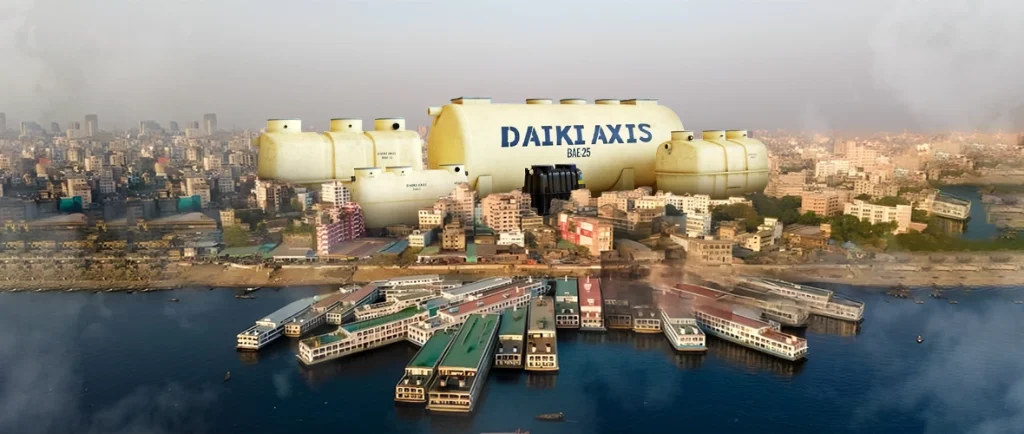
If you’re looking for the best sewage treatment plant (STP) supplier in Bangladesh, Daiki Axis Bangladesh is a great option. They specialize in eco-friendly solutions that are both effective and long-lasting. Here’s why they’re a top choice:
A Wealth of Experience: Daiki Axis Bangladesh has worked on numerous sewage treatment projects across the country. Their years of experience allow them to tackle various challenges and deliver excellent results.
Using the Latest Technology: Daiki Axis makes use of modern systems like Membrane Bioreactors (MBR) and biofilm-based solutions, which help clean water quickly and efficiently. These systems are space-saving and ensure the treated water is safe to reuse.
Tailored Solutions: What sets Daiki Axis apart is their commitment to providing solutions that fit your specific needs. Whether you have a small residential space or a large industrial site, they’ll design a system that works best for you.
Compact Systems: If you’re dealing with limited space, Daiki Axis has you covered. Their systems are compact and designed to fit in smaller areas without compromising on performance, making them ideal for cities or areas where space is limited.
Easy to Maintain: Daiki Axis’s systems are simple to maintain. This reduces the need for costly repairs and makes long-term upkeep easier, saving you both time and money.
Versatile Services: Whether for a home or a factory, Daiki Axis has experience working with all kinds of clients. They’re capable of providing solutions that meet a wide range of needs.
Environmental Responsibility: Daiki Axis cares about the planet. Their systems help reduce pollution, conserve water, and allow treated water to be reused, making their solutions sustainable for the future.
We Daki Axis Bangladesh are a leading manufacturer and packaged STP plant supplier and MBR Sewage Treatment Plant in Bangladesh. Our mission is to ensure the protection of the environment and public health by providing reliable and efficient sewage treatment services.
Contact with us today to find out how our smart wastewater solutions can work for you. For reliable, cost-effective, and eco-friendly sewerage treatment, Daiki Axis Bangladesh is a trusted partner. Let’s work together for a cleaner, more sustainable future in Bangladesh!
By using a mix of community awareness, smaller treatment systems, and government support Bangladesh is working hard to improve sewage treatment in rural and peri-urban areas.
